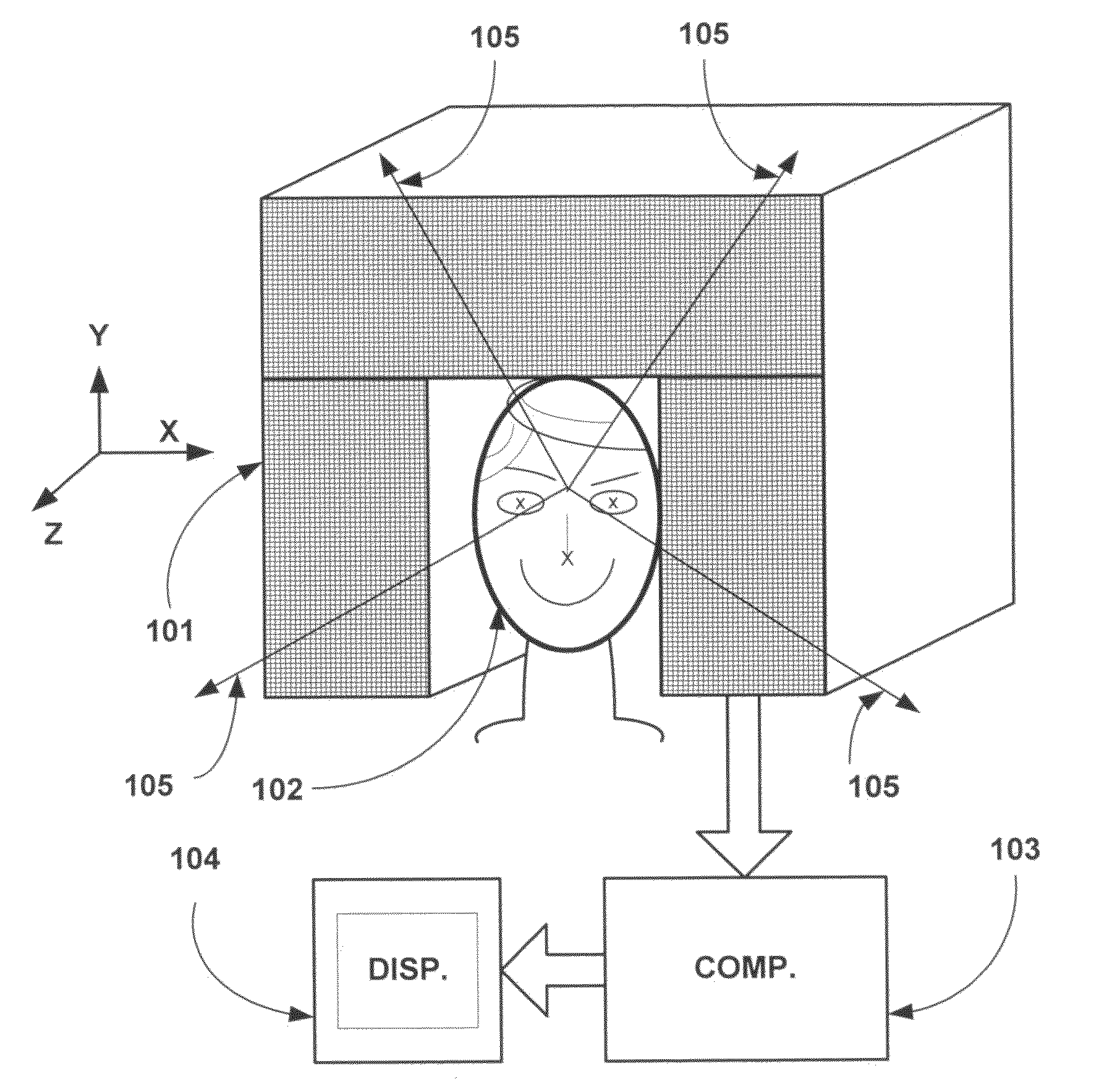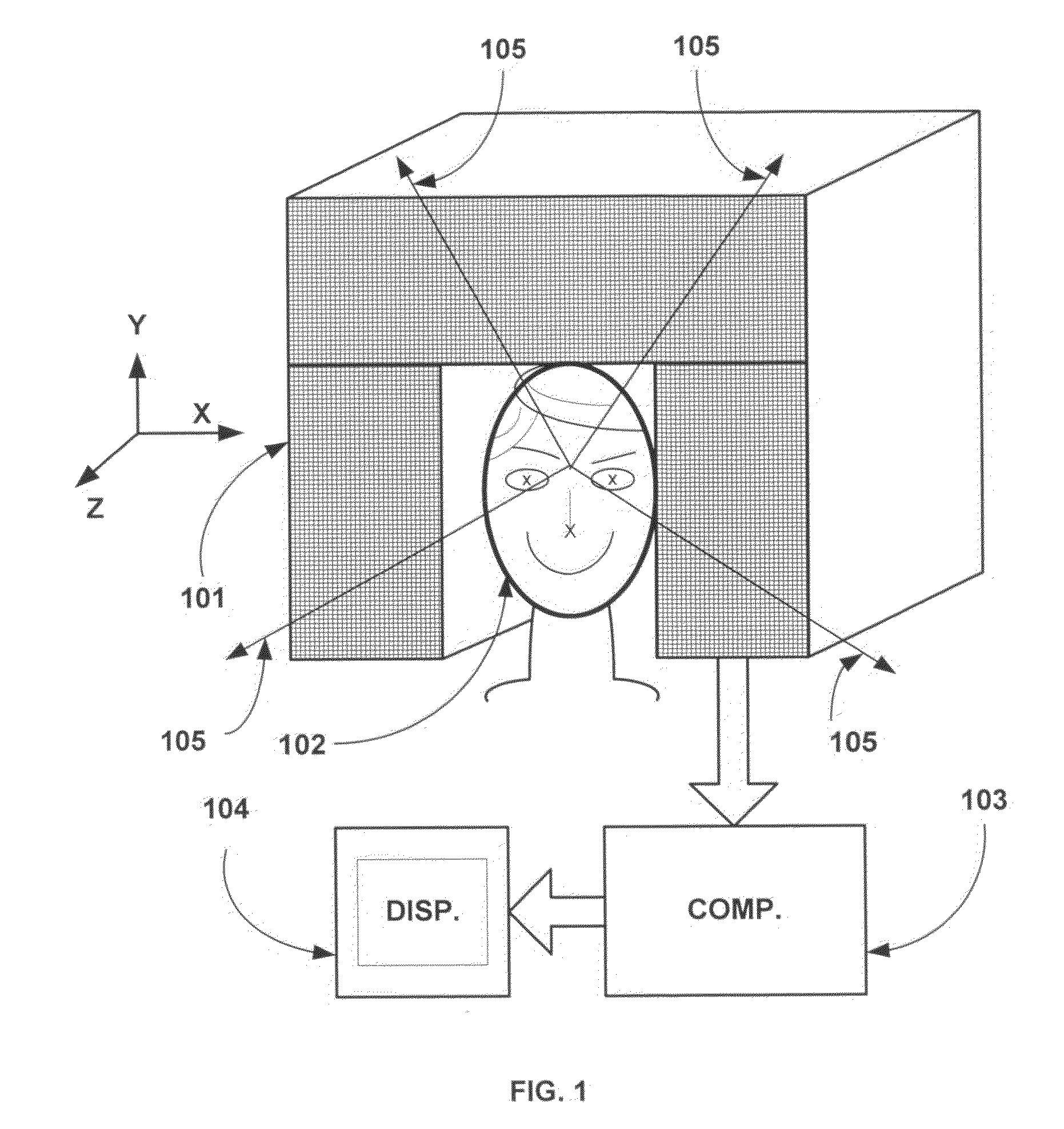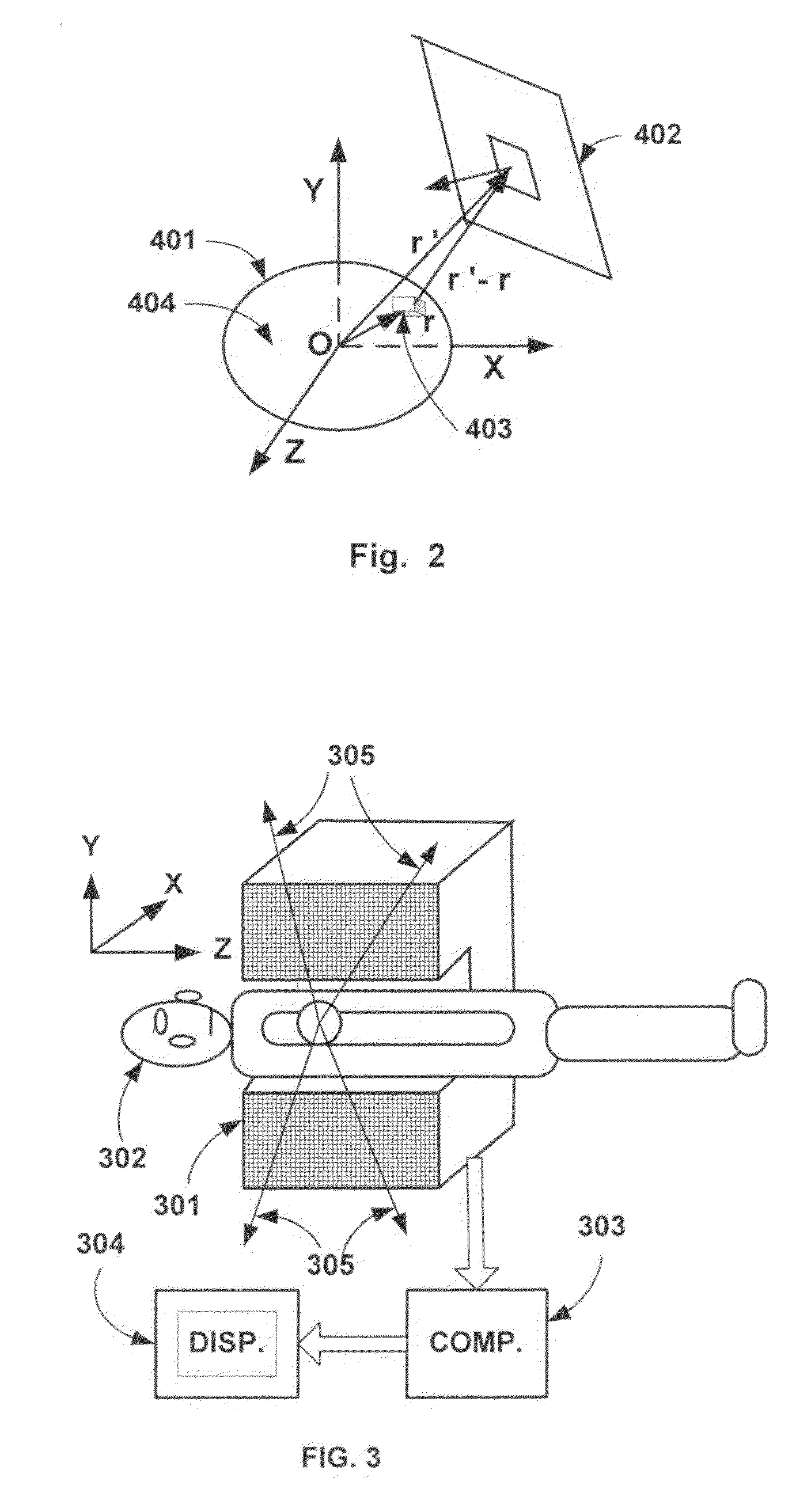Methods and apparatuses for 3D imaging in magnetoencephalography and magnetocardiography
a technology of magnetoencephalography and 3d imaging, which is applied in the field of methods and apparatuses for 3d imaging in magnetoencephalography and magnetocardiography, can solve the problems of not fully exploiting all available information, prior art is unable to and cannot provide a closed-form solution to the problem of 3d image reconstruction. solve the problem of noise n(r2), reduce the effect of noise n(r
- Summary
- Abstract
- Description
- Claims
- Application Information
AI Technical Summary
Benefits of technology
Problems solved by technology
Method used
Image
Examples
Embodiment Construction
[0039]This invention discloses novel methods and apparatuses for 3D imaging in MEG and MCG. A detailed description of the methods and apparatuses are presented in this section.
[0040]The present invention is based on a new theory not found in prior art. It is based on the Field Paradigm. Therefore, the theoretical basis of the present invention is presented with concrete mathematical derivations for 3D imaging in MEG and MCG.
[0041]Consider an object to be imaged with biological tissue in which an electrical current pattern is present. For example, in MEG, this object would be the neural tissue in a brain and in MCG this would be the muscle tissue in a heart. The case of a human head placed in an MEG apparatus is shown in FIG. 1. This object 102 occupies a certain 3D volume space V1 inside a cubical volume, say with an approximate dimension of 200 mm on each side. In FIG. 2, the object is shown as 401 and volume V1 is shown as 404. This cubical volume can be thought of as being made u...
PUM
 Login to View More
Login to View More Abstract
Description
Claims
Application Information
 Login to View More
Login to View More - R&D
- Intellectual Property
- Life Sciences
- Materials
- Tech Scout
- Unparalleled Data Quality
- Higher Quality Content
- 60% Fewer Hallucinations
Browse by: Latest US Patents, China's latest patents, Technical Efficacy Thesaurus, Application Domain, Technology Topic, Popular Technical Reports.
© 2025 PatSnap. All rights reserved.Legal|Privacy policy|Modern Slavery Act Transparency Statement|Sitemap|About US| Contact US: help@patsnap.com



